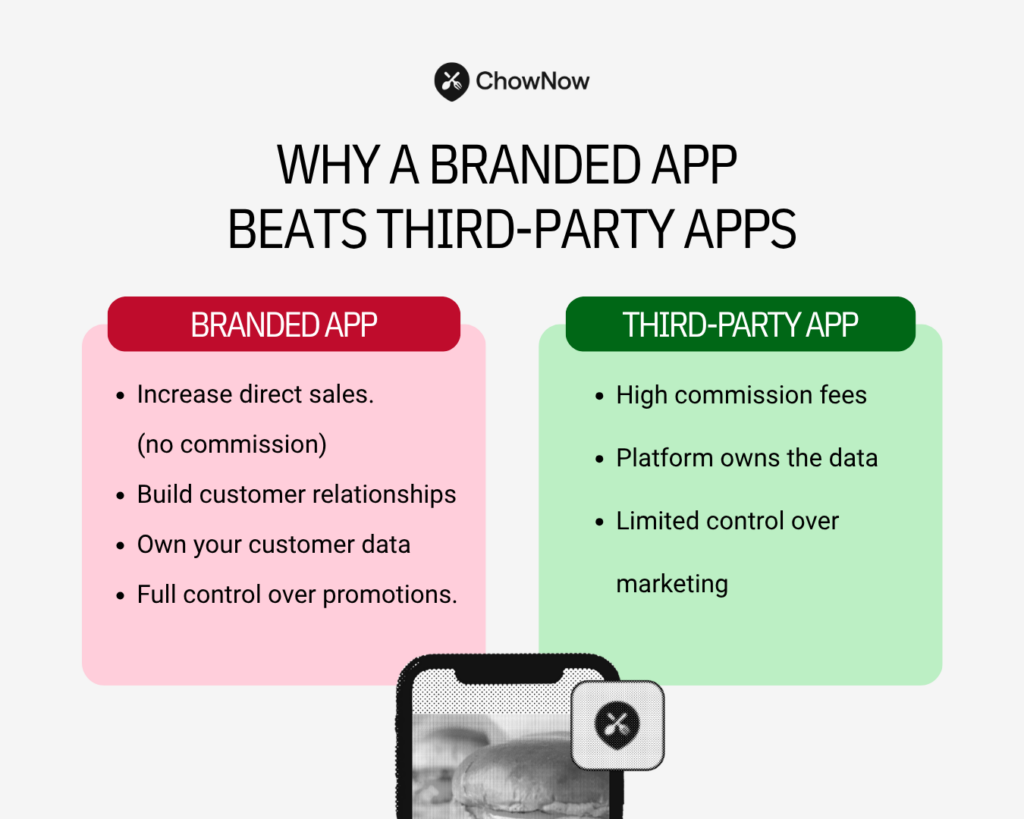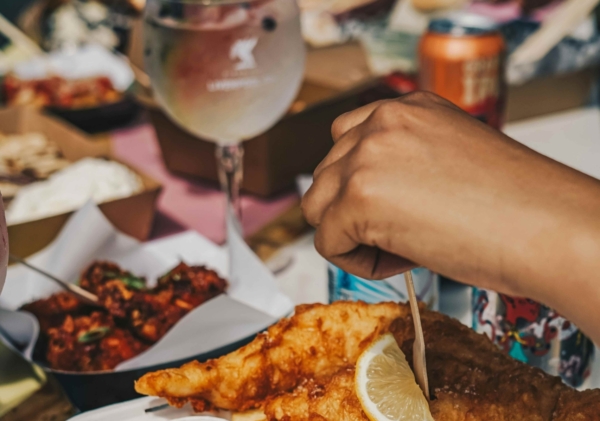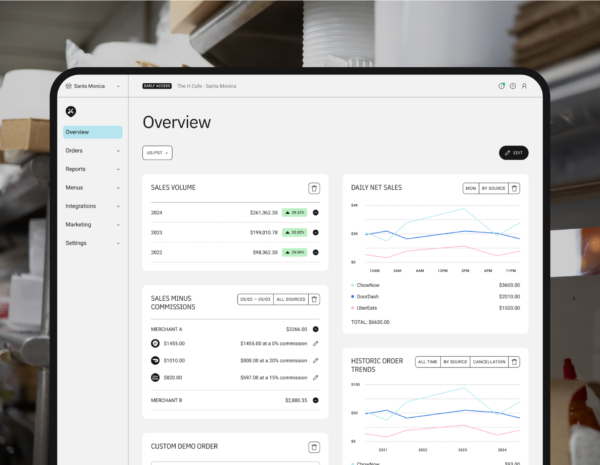Best Restaurant Apps in 2026: Boost Profits and Retention

The restaurant industry is going mobile and restaurant apps are at the center of this transformation. If your business isn’t keeping up with the changes, you risk falling behind and not meeting modern customer expectations.
Diners want the convenience of ordering, booking, and engaging with their favorite restaurants straight from their phones.
For operators, restaurant apps mean higher sales, greater customer retention, and smoother day-to-day operations.
In this guide, you’ll learn:
- Why restaurant apps matter in 2026 and how it’s the consumer driving the changes
- The different types of restaurant apps
- How to make the most of your own branded restaurant app and its many benefits
Let’s take a closer look at why every restaurant should use apps in 2026.
Why Restaurant Apps Matter in 2026 for Restaurant Owners
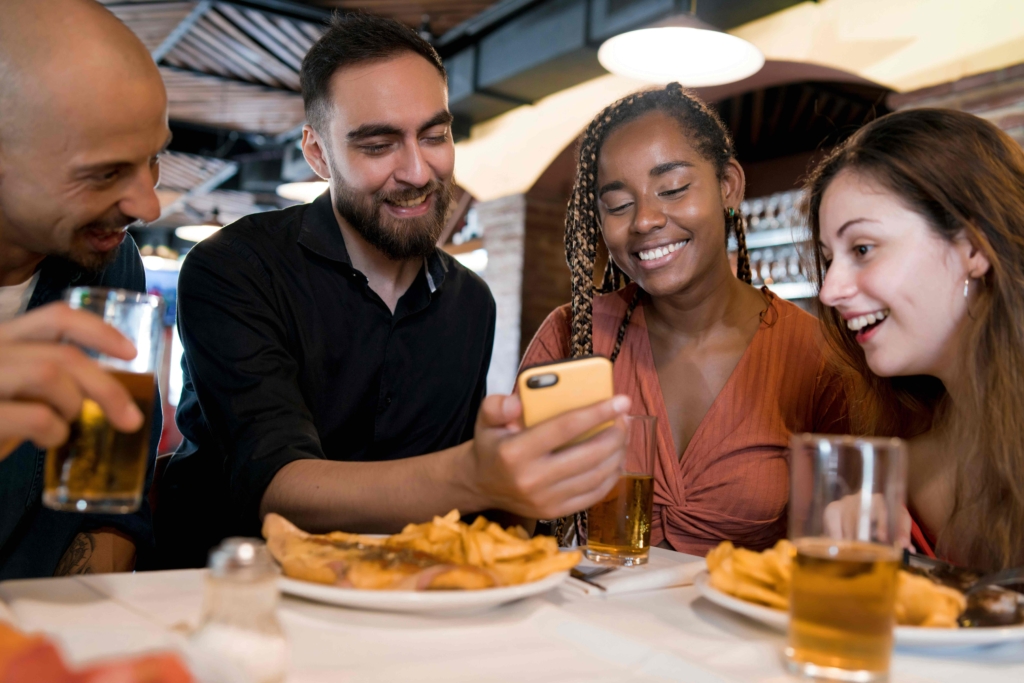
Consumer habits are evolving, and convenience is at the heart of it.
In the last five years, customers have come to expect the ordering experience to be completely frictionless, taking them from “I’m hungry and want something to eat” to “I’ve ordered something, and it’s on its way” in a matter of minutes with just a few taps of their phone.
Mobile ordering has become the preferred method for customers, with 71% saying they would rather use a restaurant’s branded mobile app over third-party platforms because it’s more affordable, easy to use, and personalized due to loyalty programs.
Beyond mobile ordering, restaurant apps support operations in ways that were never available before.

They help with reservations and table management, staff scheduling and time management to keep everyone on the same page, inventory management and tracking, rewards programs, marketing automation, and more as key features.
Without these, operators would be forced to return to doing these daily tasks manually, which is extremely expensive compared to the cost of an app, error-prone, and time-consuming, taking operators away from the more pressing matters, like helping their customers.
The key features of modern restaurant apps address critical operational needs, from inventory management to marketing automation and team communication.
With 76% of operators saying using technology gives them a competitive edge, these mobile tech tools are no longer a “nice-to-have” but an absolute necessity to stay competitive with the best restaurants in your area.
The Different Types of Mobile Apps for Restaurants (With Examples)
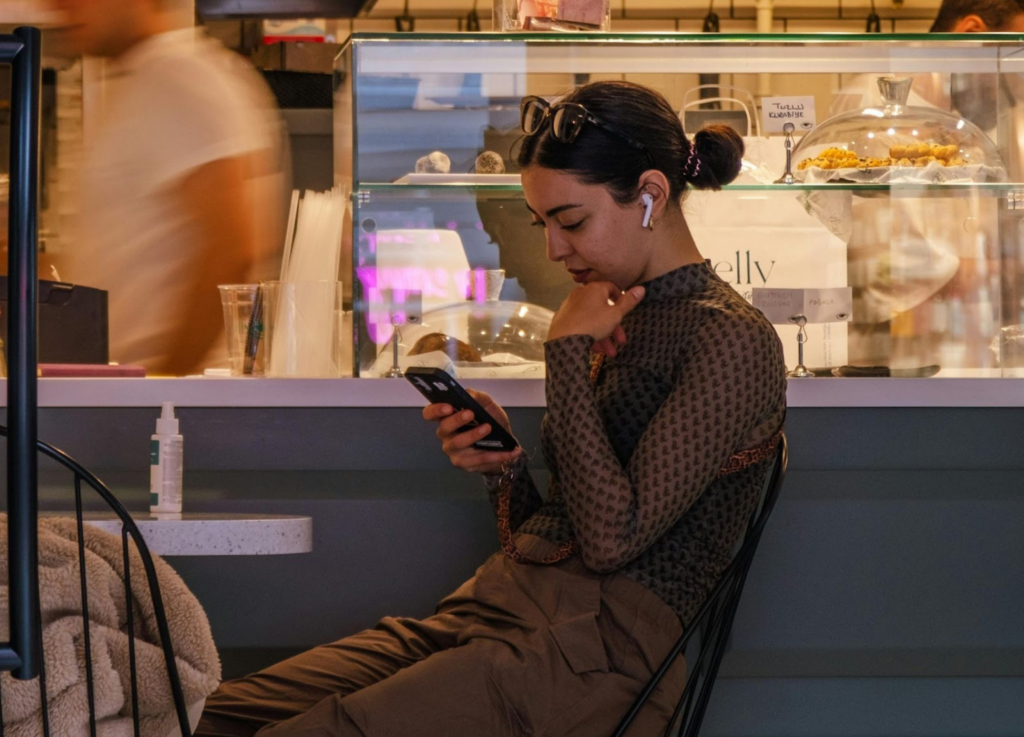
1. Online ordering and delivery apps
Online ordering has become a core part of restaurant operations, allowing customers to place takeout and delivery orders with just a few quick touches of their screen. These apps make it easier to manage digital orders, streamline kitchen operations, and reach more customers. A streamlined ordering process is a key benefit of these apps, making it simple for both customers and staff to handle orders efficiently.
There are two main types of ordering apps: third-party platforms and restaurant-owned branded apps.
- Third-party delivery apps like DoorDash and Uber Eats offer built-in customer bases and handle logistics, but come at a cost, charging huge commissions that cut into restaurant profits often as much as 30%.
- Restaurant-owned branded apps allow restaurants to accept orders directly, negating the need for a third-party, giving operators more control over pricing, customer data, and rewards programs. These apps often include features that allow restaurants to accept payments directly within the app, enhancing customer convenience and streamlining operations.
Here is an example of a restaurant’s branded app:
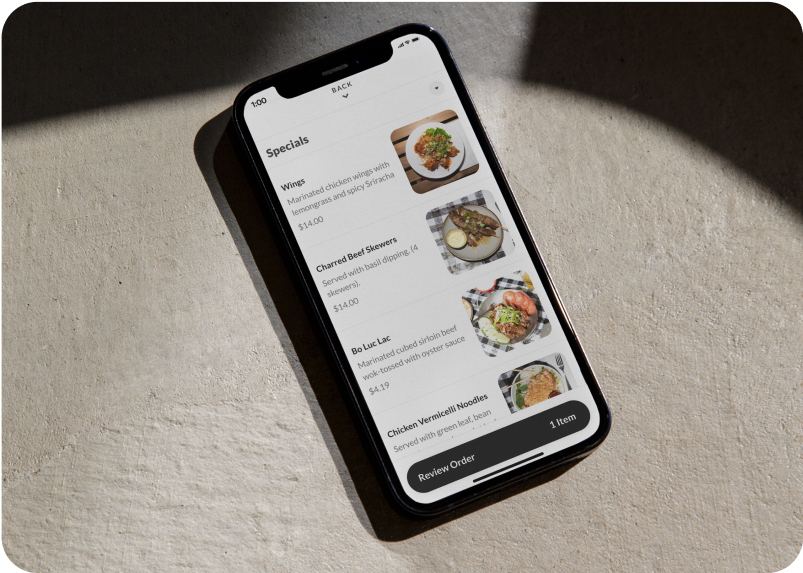
From the app, customers can browse the menu, place orders, and learn about the restaurant more easily than third-party apps, giving operators a stronger connection with their guests and making them more likely to become repeat customers. These branded platforms also help restaurants increase online sales by making the ordering process more convenient for customers.
2. Reservation and table management apps
Managing reservations and walk-in traffic can be one of the trickiest parts of running a restaurant.
A packed dining room is great, but without the right system, long wait times and disorganized seating can lead to frustrated customers and lost business.
That’s where reservation and table management apps come in.
These apps enable online reservations and help restaurants manage reservations efficiently. They help restaurants accept reservations online, organize their waitlists, and even optimize seating arrangements to maximize table turnover. Instead of juggling phone calls and paper lists, your team can manage everything in one place.
Some apps even send automatic reminders to customers, reducing no shows as a key benefit, helping you keep tables full and business running smoothly.
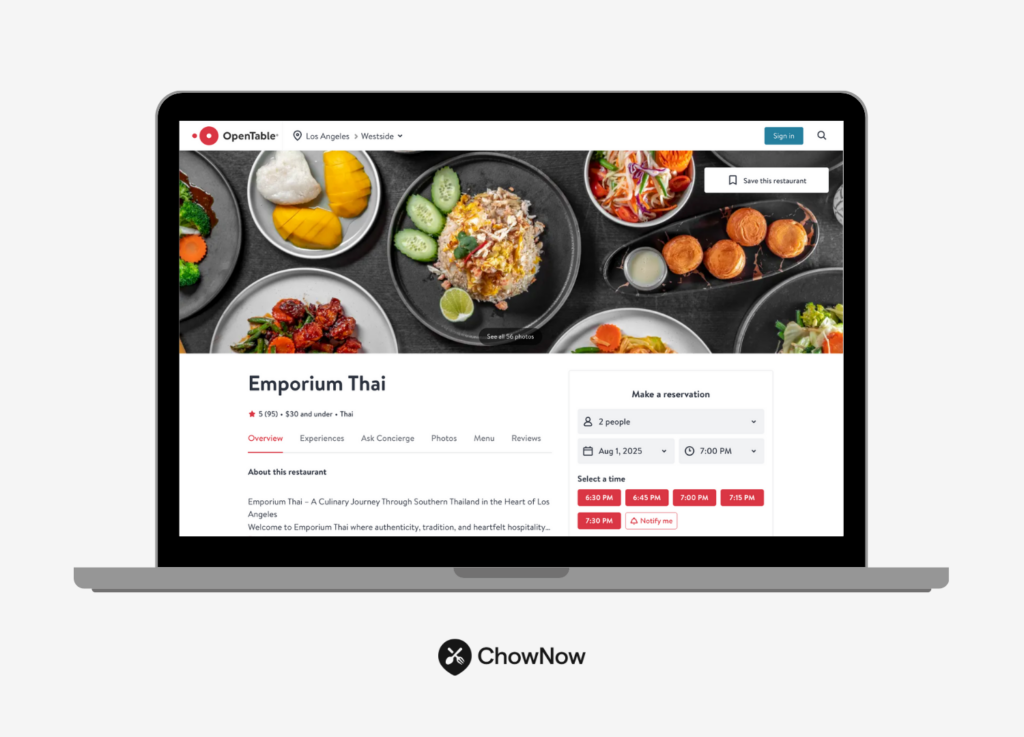
Popular platforms like OpenTable (with the only complaint from some restaurant owners being that occasionally a restaurant isn’t included in the app’s offerings), Resy, Yelp Guest Manager, and Eat App—which is tailored for busy restaurants and focuses on streamlining bookings, managing waitlists, and enhancing front-of-house operations—provide different levels of functionality, from simple online booking to full-scale table management with customer insights and marketing features.
These platforms also provide valuable insights into guest behavior, helping restaurants understand customer preferences, optimize their service, and improve marketing strategies.
Choosing the right app depends on the restaurant’s needs whether it’s a high-volume spot that requires sophisticated reservation tracking or a smaller venue that just needs an easy way to manage seating.
3. Staff scheduling and management apps
Scheduling and managing staff is a constant uphill battle. With scheduled time off, sick days, accidental clock-ins and clock-outs, overtime, and shift swaps, it takes hours every week to maintain, and if you’re lucky, there are only minimal mistakes.
Staff scheduling and management apps eliminate the guesswork in shift planning, payroll tracking, and team communication so you can focus on running your business instead of worrying that people are in the right place at the right time.
Instead of relying on spreadsheets or last-minute shift swaps, these apps allow managers to quickly assign shifts, set labor cost targets, and notify employees of schedule updates in real-time. Many platforms also include built-in messaging features that are designed to be user-friendly for restaurant staff, making onboarding and daily operations smoother by helping teams communicate, trade shifts, and stay informed about important updates.
Popular options like 7shifts, Homebase, and Schedulefly cater to different types of restaurants, from small independent spots to multi-location operations.
View this post on Instagram
4. Inventory and supply chain apps
It’s difficult to build a solid foundation of repeat customers if the kitchen is constantly 86ing popular menu items. Running out of key ingredients can lead to frustrated customers while over-ordering can result in wasted food and lost profits.
Inventory and supply chain apps help restaurants track ingredient usage, monitor stock levels, and manage supplier orders with ease. These tools provide robust inventory control and make managing inventory more efficient, helping restaurants streamline their operations.
These apps automate inventory tracking, so you always know what’s in stock and what needs to be reordered. Some even integrate with point-of-sale (POS) systems to update inventory levels in real-time as orders are placed. This helps reduce food waste, control food costs, and ensure you’re never caught off guard during a busy service.
Popular platforms like MarketMan, BlueCart, and xtraCHEF offer features like automated ordering, cost tracking, and supplier management. Choosing the right inventory app depends on a restaurant’s size, menu complexity, and purchasing volume, but having a reliable system in place can lead to better margins and smoother operations.
How to Choose Which Restaurant Apps Are Right for Your Business In 7 Steps
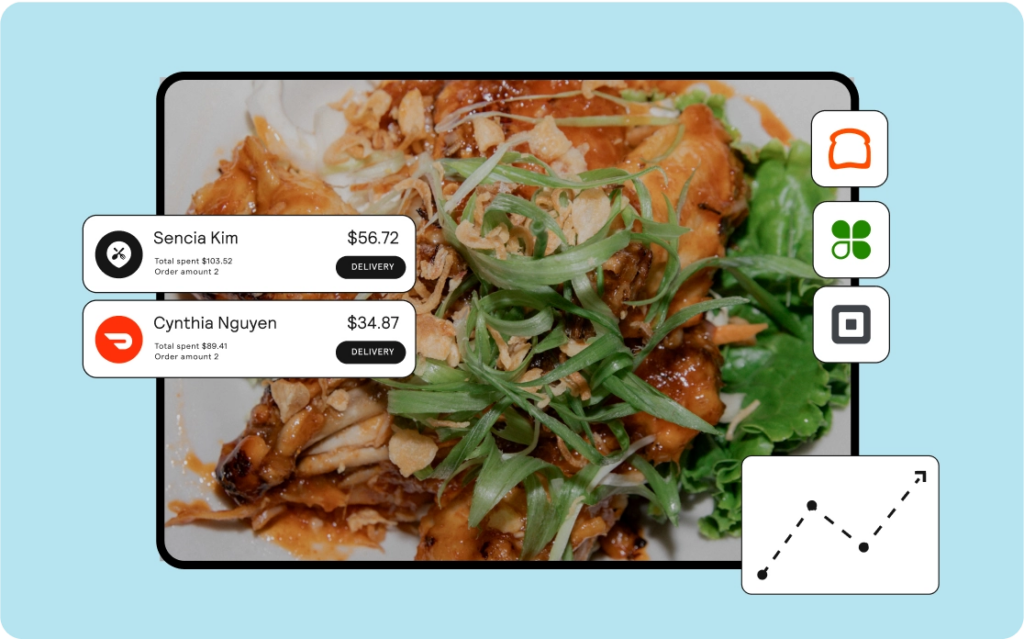
1. Know your priorities
Start by deciding what you need the app to do. Do you want to streamline online ordering systems, improve reservations, manage employee scheduling, or build a loyalty program? Focus on the core features that will have the biggest impact on your operations.
2. Consider ease of use
The app should be intuitive for your team. Selecting an easy-to-use platform is crucial for smooth adoption by staff, especially for businesses with limited technical training. Complicated systems slow down service and create inefficient workflows. Look for a platform with a simple management interface and reliable customer support.
3. Check for integration compatibility
If you already use a POS system, online ordering platform, or staff management tool, make sure the app integrates smoothly with your existing setup. The right app should enhance your workflow, not create extra steps.

4. Assess Costs and Fees
Some apps charge flat monthly fees, while others take a percentage of every order. Be sure to understand the pricing structure and how it fits into your budget. A more expensive app with better features may save money in the long run by improving efficiency and customer retention.
5. Choose an App That Keeps You on Brand
If the app is diner-facing, pick an app that allows you to maintain your restaurant’s unique identity rather than blending into a generic platform. The right one should reflect your brand’s look, feel, and customer experience, helping to strengthen recognition and build long-term loyalty.
6. Read Reviews and Get Recommendations
Learn from other restaurant owners by checking online reviews or asking industry peers about their experiences. First-hand insights can help you avoid apps with hidden issues or poor customer support.
7. Request a Demo Before Committing
Many apps offer a free demo so you can see how well the platform fits your needs before making a long-term commitment. Take advantage of this because you can also ask any questions you have about the app.
Not every tool will be a good fit for your restaurant, but by going through these steps, you’ll narrow down your options considerably.
The Benefits of Your Own Branded Restaurant Ordering App
Having your restaurant’s own branded mobile app isn’t about keeping up with the latest industry trends, it’s about owning your customer relationships, improving your online reputation by encouraging positive reviews and direct engagement, and making the most of your profits.
Yes, third-party platforms can help you reach new customers, but they take a monumental cut of every order and limit your control over marketing and promotions.
With a branded direct ordering app, you get not only the direct guest connection every restaurant needs but also full control over the customer experience, including ownership of valuable guest data and sales data that enable more effective marketing and business growth.
Here are several benefits to launching your own branded mobile app.
1. Easily increase your direct sales
70% of consumers say they’d rather order directly from a restaurant, stating that they prefer the money going straight to the restaurant. Branded apps give customers the direct link to your business they’re looking for.
With a dedicated app, restaurants can control pricing, menu updates, and promotions without restrictions. By making it easier for customers to order directly, branded apps help drive more sales.
It also reduces dependency on delivery platforms that often prioritize their own branding over the restaurant’s, ensuring that customers associate their dining experience with your restaurant—not a go-between service.

2. Build stronger customer relationships
A branded restaurant app eliminates the third-party barrier so you can stay engaged with customers and build longer-lasting relationships.
When customers order through a third-party service, the platform—not the restaurant—controls the data, making it harder to track repeat guests, tailor promotions, or build long-term loyalty.
With a restaurant’s own app, customer data stays in-house, allowing operators to understand ordering habits, send personalized offers, and reward frequent visitors.
Automated campaigns can be used to engage customers with timely, relevant messages and increase retention with minimal manual effort. This level of insight helps restaurants create better marketing strategies, improve guest retention, and turn occasional diners into loyal regulars.
3. More control over promotions and discounts
When you use third-party ordering platforms, they decide which promotions you can run, how discounts are applied, and whether or not your deals get prime placement.
With your own branded restaurant app, you take back control, allowing you to offer exclusive deals, run targeted promotions, and experiment with discounts that actually make sense for your business.
How to Make the Most of Your Restaurant App

1. Make it easy for customers to download and use
Having your own mobile app is pointless if customers don’t know it’s available or find it too complicated to use. The goal should be to make it as easy as possible for people to download and start using it right away.
Promote is across all customer touchpoints, including:
- Website: Add a clear call-to-action (CTA) on your homepage with direct download links.
- Social Media: Regularly post about the app’s benefits, including exclusive offers and features.
- In-Store Signage: Use table tents, posters, and digital displays to encourage downloads.
- Receipts & Takeout Packaging: Include QR codes linking directly to the app store.
Let customers know they can easily download your app from Google Play for Android devices, making access simple and convenient.
In addition, you should offer incentives to first-time users. Customers are more likely to download your app if there’s immediate value in doing so.
For example, a simple offer like $5 or 15% off your first order can drive downloads and get people using the app right away. You should also inform customers they get their first points or stickers in their rewards program, getting them that much closer to another discount.
The easier it is for customers to see the value in your app, the more likely they are to use it regularly.
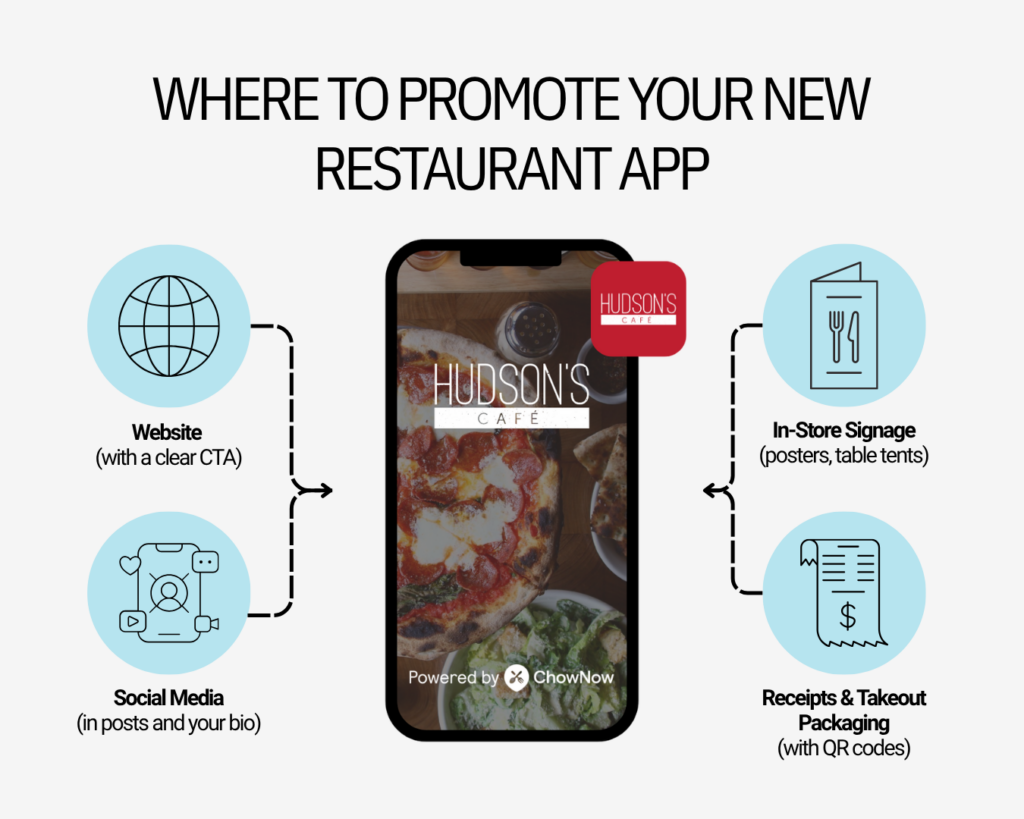
2. Leverage push notifications without overwhelming customers
Push notifications can be a very powerful way to engage customers, but if overused, they can become annoying, causing customers to outright ignore them or sometimes even delete your app.
The trick is to use them strategically to add value without overloading your audience. Here are the four times you should use push notifications:
- For exclusive promotions: Send limited-time discounts or app-only deals to encourage repeat orders.
- To remind customers to reorder: A well-timed nudge (like a reminder about a popular dish) can drive sales.
- To share important updates: Notify customers about holiday hours, special events, or new menu items.
- To engage loyalty program members: Let users know when they’ve earned a reward or have points expiring soon.
The best approach?
Keep notifications relevant and occasional.
A couple of well-placed messages per week can boost engagement, while too many can push users away. When done right, push notifications help keep your restaurant top of mind without feeling like spam.

3. Offer customers a loyalty and rewards program to keep them engaged
A highly efficient restaurant app isn’t just about ordering convenience—it should also keep customers coming back.
Integrating a loyalty and rewards program into your app encourages repeat business by giving diners an incentive to order directly from you instead of a third-party platform.
Loyalty programs don’t just benefit customers—they increase revenue by encouraging repeat visits and larger order sizes. 45% of consumers say that a rewards program would encourage them to use online ordering services more often.
For example, with the ChowNow Rewards program, restaurants can offer digital punch-card style rewards on orders placed through their branded mobile apps. Customers can unlock discounts once they reach their goal.
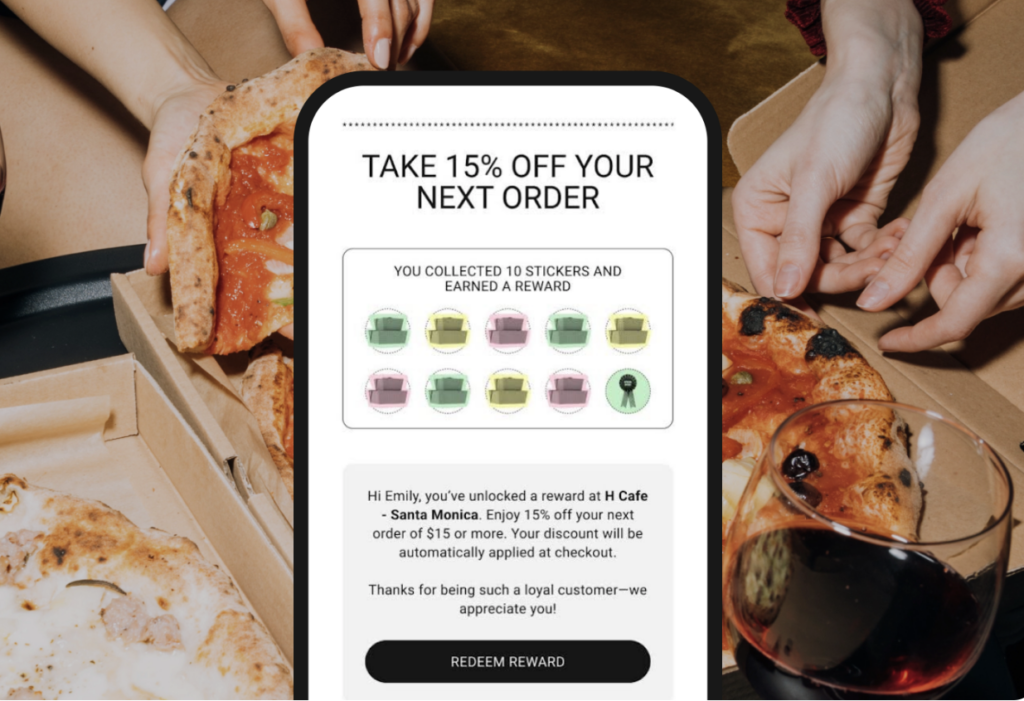
When customers know they’re earning something extra every time they order, they’re more likely to choose your restaurant over competitors.
5. Make the user experience feel effortless
A restaurant app should make life easier for your customers—not frustrate them with slow load times, confusing menus, or clunky navigation.
A smooth, intuitive experience ensures customers keep using your app instead of abandoning it for a competitor’s. A well-designed app also enables faster service by streamlining order management and delivery, helping customers receive their food more quickly and efficiently.
What Makes a Great User Experience?
- Fast loading times: No one wants to wait for a laggy app; speed keeps users engaged—this is a key quality of a great app.
- Simple, intuitive navigation: Ordering, reservations, and rewards should be easy to find in just a few taps, which is what users expect from a great app.
- Mobile-friendly design: The app should look great and function flawlessly on any device, another hallmark of a great app.
- Secure and seamless checkout: Reduce friction with saved payment options and one-click ordering.
A well-designed app doesn’t just improve customer satisfaction—it also increases conversions. For example, here are two screenshots of Renegade Buritto’s ordering menu on their branded mobile app.
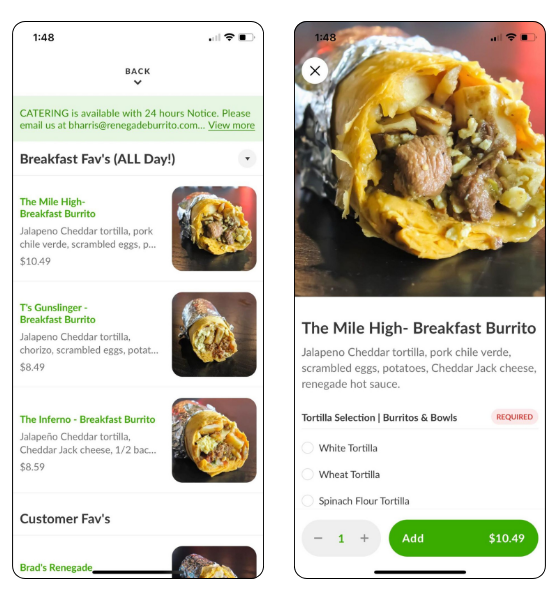
The first image clearly shows customers’ “Fav’s” and that they’re available all day—after being selected, customers will see the second image, where it’s very intuitive on how to choose tortillas and modify their menu items.
Renegade Burrito saw a 6X increase in online orders through their ChowNow branded mobile app.
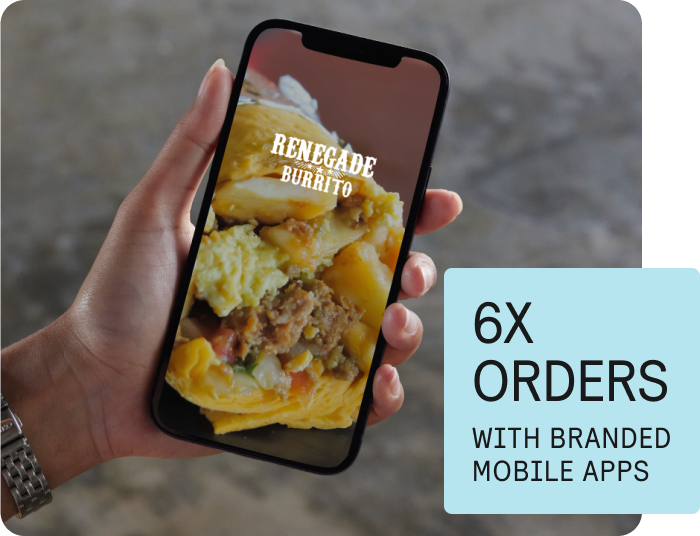
6. Track performance metrics and make adjustments based on insight.
A great restaurant app isn’t just a tool for orders and reservations—it’s also a goldmine of valuable data. By tracking key metrics, you can see what’s working, what’s not, and make smarter business decisions to improve customer engagement and sales. Encouraging users to add photos can further enhance your app’s appeal and provide valuable user-generated content for analysis.
Key metrics to keep an eye on:
- App downloads: A high download rate means strong interest, but low engagement could indicate usability issues.
- Repeat orders: Are customers coming back? If not, consider offering exclusive deals or improving the app experience.
- Loyalty program participation: Track how many customers are using rewards and whether it’s driving repeat visits.
- Push notification engagement: See which messages lead to more orders and adjust your strategy accordingly.
By regularly reviewing these insights, you can fine-tune your promotions, improve the user experience, and get the most value out of your restaurant app, keeping it an essential part of your business.
The Future of Restaurant Apps
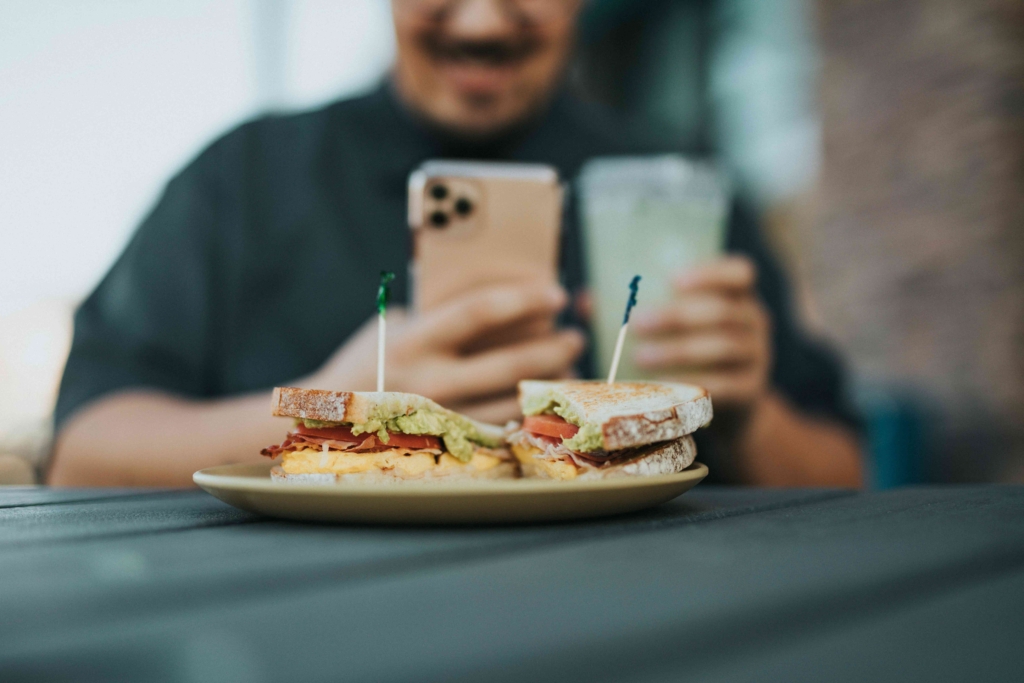
Restaurant technology is growing at an incredible rate with restaurant apps being at the forefront of this revolution. These new apps are true game changers for the industry, transforming efficiency, revenue, and overall success.
With 92% of top-performing restaurants offering mobile app online ordering compared to only 31% of low-performing restaurants using apps, restaurant tech companies are working hard to meet the demand of both operators’ and restaurant customer expectations as they evolve.
Restaurants that embrace these innovations will gain a competitive edge, offering customers faster, smarter, and more engaging experiences—restaurants that don’t will get left behind. To fully access these advanced features and manage inventory from anywhere, a reliable internet connection is essential.
Contact ChowNow to learn how a branded mobile app can help your restaurant increase direct online orders and boost customer retention.
Frequently Asked Questions About Restaurant Apps
1. What is a restaurant app?
A restaurant app is a digital one-stop shop for your business and your guests. It allows customers to place orders, make reservations, earn rewards, and find restaurants nearby. For owners, it can centralize operations — helping assign and track tasks, manage inventory, and improve operational efficiency across the team.
2. Do all restaurants need an app?
Not every restaurant needs an app, but it’s quickly becoming a competitive advantage. A branded restaurant app helps restaurant workers streamline communication, monitor engagement, and build stronger guest relationships. If you rely on online orders, loyalty programs, or reservations, an app can turn everyday operations into a more efficient, data-driven system.
3. What are the benefits of having a branded restaurant app?
A branded restaurant app gives you full control — unlike third-party platforms such as Uber Eats. You can keep your profits, own your guest data, and use built-in tools to schedule content, send promotions, and collect guest notes for personalized service. It’s a one-stop shop for managing customer loyalty, marketing, and operations from a centralized dashboard.
4. Can restaurant apps integrate with my existing POS system?
Yes. Many restaurant apps integrate with POS systems and ordering tools to streamline operations. This makes it easy to sync menu updates, track payments, and connect customer data in one centralized dashboard. Integration is key to improving operational efficiency without disrupting your existing setup.
5. Do restaurant apps support loyalty programs?
Absolutely. Most apps include loyalty and rewards features that let guests earn points, redeem offers, and engage with your restaurant beyond a single visit. You can also monitor engagement trends to understand what keeps customers coming back — and reward them accordingly.
6. Are restaurant apps secure for payments?
Yes. Reputable restaurant apps use built-in payment security and encryption to protect customer data and transactions. Choose a trusted provider with strong authentication processes to ensure guests can order and pay with confidence.
7. How do I choose the right restaurant app for my business?
Start by identifying your top priorities — whether it’s streamlining operations, marketing, or guest engagement. Look for a solution that acts as a one-stop shop: a centralized dashboard where you can assign tasks, monitor engagement, receive low stock alerts, and scale as you open new restaurants. The right app should make running your business simpler, not harder.
